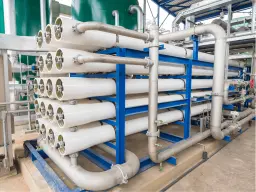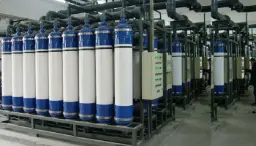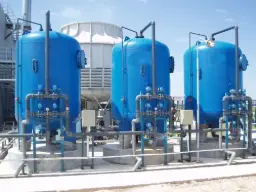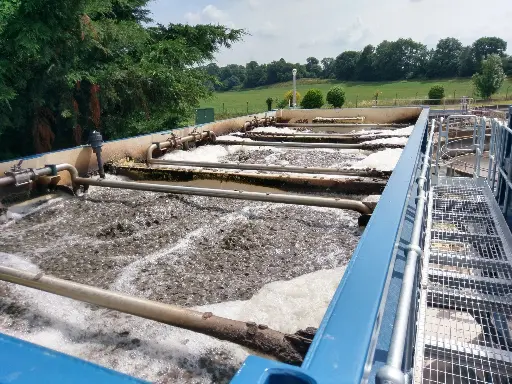Recycled Water for Pulping Processes
Pulp and paper mills consume vast quantities of water at almost every stage of fibre preparation, cooking, washing and bleaching. Within the pulping area itself, large volumes rinse residual lignin, transport pulp slurry and absorb heat released in chemical reactions. Freshwater withdrawals historically topped thousands of cubic metres per tonne of finished paper, a figure that stressed local river basins and elevated operating costs. In recent decades environmental permits, discharge fees and corporate sustainability targets have transformed this situation. Mills now seek to recapture process water, polish it to stringent specifications and return it to high-value applications without compromising fibre quality or run-ability. Recycled Water for Pulping Processes therefore refers to a closed-loop strategy in which clarified, filtered and disinfected streams replace once-through supplies in brown stock washing, dilution, cooling and even boiler feed make-up.
The value proposition extends far beyond conservation. Reusing water at stable temperature and chemistry minimises hydraulic swings through washers and presses, improving sheet consistency and reducing steam demand in later drying sections. Reduction in sewer loading lowers biological oxygen demand (BOD) surcharges, while diminished intake volumes can defer costly capacity upgrades to raw-water intakes or clarifiers. Many mills now integrate digital twins and soft sensors, enabling predictive control of recycled-water quality and flow so that operators view it as a reliable utility rather than a risky by-product. Ultimately, robust water treatment converts what was once effluent into a competitive advantage, aligning with circular-economy principles and investor expectations for demonstrable resource stewardship.
Water Treatment Systems Used for This Process

Reverse Osmosis
Thin-film composite spiral-wound elements strip monovalent ions, colour bodies and conductivity, producing high-purity permeate suitable for dilution or boiler make-up. Energy-efficient high-rejection membranes achieve 75-85 % recovery at 15-20 bar.

Ultrafiltration
Polyethersulfone or PVDF hollow fibres retain high-molecular-weight lignin fragments and bacteria while allowing low-ionic species to permeate. Flux rates around 75 L m⁻² h⁻¹ balance recovery and cleaning frequency.

Dissolved Air Flotation (DAF)
Pressurised white water is saturated with micro-bubbles that attach to colloidal organics and pitch, floating them to the surface for skimming. The unit excels at removing light contaminants before downstream membranes.

MBBR Systems
Polyethylene carriers provide surface area for aerobic bacteria that degrade soluble BOD left after primary clarification, stabilising load to polishing steps and limiting membrane fouling.
Efficient recycling hinges on combining these complementary technologies so that each removes a specific contaminant class without over-treating the water or escalating energy consumption. Mechanical separation tackles fibres first, biological oxidation cuts biodegradable load, and membrane barriers deliver the final ionic purity. Sequencing also protects capital assets, for example by shielding RO elements from fouling particles captured earlier by UF. Integrating monitoring instrumentation at the inter-stage points lets control logic divert off-spec streams back to equalisation tanks, protecting pulp quality and ensuring uninterrupted operation even when upstream shocks occur.
Key Water-Quality Parameters Monitored
Understanding which parameters most influence pulp brightness, equipment integrity and regulatory compliance is vital before designing a recycled-water scheme. Mill engineers therefore track a spectrum of physical, chemical and microbiological indicators every minute. In the first paragraph of this section the focus often falls on turbidity, a fast proxy for residual solids that can blind washer felts or sand blast pump seals. Total organic carbon (TOC) follows closely because lignin derivatives promote bio-films in pipes and heat exchangers, driving both microbial induced corrosion and odour complaints. Conductivity and specific ion species such as chlorides matter for corrosion control in mild-steel liquor lines, while colour expressed as Pt-Co units serves as an early warning of insufficient bleaching filtrate segregation. Operators also observe oxidation-reduction potential (ORP) when peroxide or ozone is applied, maintaining enough dosing margin to destroy chromophores without wasting chemicals.
In the second paragraph attention shifts to biological counts, especially sulphite-reducing bacteria that thrive in warm, nutrient-rich filtrates. Periodic ATP testing provides a rapid indication of live biomass growth prior to noticeable slime formation. Temperature and pH, although seemingly basic, strongly affect resin life in ion exchange polishers and scaling tendency on RO membranes. Finally, residual disinfectant such as chlorine dioxide is trended to ensure biocidal barrier presence during storage yet stays low enough to protect stainless welding seams. Collectively these datapoints feed advanced analytics that correlate quality drift with fibre line events, allowing predictive adjustments to dosage or bypass rates long before off-grade pulp appears.
| Parameter | Typical Range | Control Method |
|---|---|---|
| Turbidity (NTU) | 0.5 – 2.0 | Inline turbidimeter, polymer micro-floc addition |
| Total Organic Carbon (mg L⁻¹) | 2 – 10 | Online TOC analyser, activated carbon or AOP |
| Conductivity (µS cm⁻¹) | 50 – 200 | Conductivity probe, RO permeate blending |
| Colour (Pt-Co) | 5 – 15 | UV-Vis sensor, AOP optimisation |
| pH | 6.5 – 8.0 | pH probe, caustic or acid dosing |
| Residual Chlorine Dioxide (mg L⁻¹) | 0.05 – 0.2 | Amperometric cell, automatic trim dosing |
Design & Implementation Considerations
Successful projects begin with a rigorous mass balance that quantifies every cubic metre entering and leaving each department. Engineers calculate design flow by averaging peak week demand and applying a contingency factor that reflects grade swings or future expansion. Membrane array sizing follows empirical flux guidelines but is refined through pilot trials that replicate native foulant spectra. Material selection must endure alkaline pulping liquors and abrasive fines, so 316 L stainless steel or duplex alloys predominate in high-pressure circuits, whereas fibre-laden streams favour glass-reinforced polypropylene pipes to lower erosion and weight. Pump impellers are often rubber-lined to resist cavitation when entrained air from DAF units persists.
On the instrumentation front, magnetostrictive level transmitters offer immunity to foam in equalisation basins, and Coriolis mass flowmeters give density-compensated readings valuable for chemical dosing. Piping and instrumentation diagrams (P&IDs) map bypass loops around each treatment stage, enabling isolation for clean-in-place (CIP) without stopping fibreline production. Automation harnesses PLCs that exchange OPC-UA tags with mill data historians so that quality alarms can propagate into overarching Manufacturing Execution Systems (MES). Compliance with ISO 22000 and WHO guidelines on process water requires validated control logic, while contacting surfaces for potable applications must meet NSF/ANSI 61 certification. In export-oriented mills, adherence to FDA 21 CFR 176 regulates indirect food-contact, influencing gasket selections and lubricant choices.
Graphical simulation of the hydraulic profile using computational fluid dynamics (CFD) helps prevent dead-zones in balancing tanks, thereby averting anaerobic pockets that seed odours. Energy optimisation studies compare high-pressure pumps driven by variable-frequency drives against isobaric energy-recovery devices commonly seen in seawater desalination, showing up to 15 % kWh savings in high-conductivity circuits. Additionally, integration of rooftop photovoltaic arrays can be assessed to offset daytime load from UV reactors. Finally, contingency planning includes power-failure bypasses that flush critical equipment with fresh filtrate to prevent thermal shock or fibre bake-on, a nuance sometimes overlooked until a blackout first occurs.
Operation & Maintenance
Routine performance hinges on disciplined preventive maintenance that anticipates rather than reacts to fouling or mechanical wear. Operators schedule membrane CIP sequences based on normalised differential pressure rise instead of calendar days; this predictive approach maximises uptime and chemical efficiency. UF modules often use low-pH citric acid followed by alkaline peroxide, whereas RO stacks receive two-stage alkaline then acidic cleans to dissolve organics and calcium carbonate scale. DAF saturator nozzles are inspected weekly for orifice clogging by pitch agglomerates, and skimmer chains receive bi-weekly tension checks to avoid uneven sludge removal.
Spare-parts strategy focuses on critical items with long lead times: high-pressure pump shafts, UV lamp drivers, PLC I/O cards and gasket kits cut to proprietary geometries. Many mills hold a full “dry” spare RO pressure vessel that can be swapped in hours to restore capacity if an element fails catastrophically. Lubrication schedules align with manufacturer grease life curves adjusted for ambient temperature inside humid pump rooms. Competency matrices define skill sets for each shift, ensuring at least one technician can calibrate ORP sensors or troubleshoot variable-frequency drives without waiting for day-shift specialists. Augmented-reality headsets now overlay exploded diagrams during overhaul, reducing human error and shaving minutes off critical path jobs.
Challenges & Solutions
Scaling poses a persistent threat when calcium or barium precipitate within membrane channels, throttling flow and accelerating element ageing. Mitigation starts with accurate antiscalant dosing, backed by Langelier Saturation Index calculation under live temperature and pH conditions. Bio-fouling emerges next, fed by dissolved sugars that slip through clarification. Supplemental monochloramine residuals at 0.5 mg L⁻¹ and periodic high-flux forward flushes strip early colonies before they embed in polymer pores. Regulatory hurdles also intensify, especially where indirect potable reuse is contemplated; demonstrating multi-barrier redundancy under ISO 22000’s Hazard Analysis and Critical Control Point (HACCP) approach satisfies auditors yet raises documentation workload.
Economic pressure rounds out the trio of major challenges. Energy tariffs can swing widely, risking budget overruns when specific energy consumption drifts upward due to membrane ageing. Mills combat this with high-frequency efficiency audits comparing kWh m⁻³ against design and triggering mid-life element replacements when payback is under two years. Capital constraints for retrofit projects often restrict footprint; engineers respond by stacking membrane skids vertically and integrating combined DAF-UF packages that share common tanks. Finally, community perceptions of water reuse occasionally lag technology, so transparent reporting dashboards and open-house tours build trust long before permitting hearings.
Advantages & Disadvantages
Adopting recycled water confers a spectrum of operational and environmental gains that strongly influence mill competitiveness. First, withdrawal volumes fall dramatically, safeguarding water rights during drought and enabling production increases within existing permits. Second, discharge load shrinks, translating into lower effluent treatment costs and fewer surcharges for biochemical oxygen demand and colour. Third, consistent temperature and chemistry of the recycled stream stabilise washing efficiency and reduce steam needed in evaporators. Digital monitoring further enhances process knowledge, revealing correlations between washing loss and fibre yield that were previously masked by intake variability. Sustainability credentials, meanwhile, resonate with brand owners who increasingly audit Scope 3 impacts along the paper supply chain.
Nevertheless, disadvantages exist. Capital outlay for membranes, controls and civil works can challenge short-term cash flow, especially in markets with volatile pulp prices. Maintenance complexity rises as operators juggle additional instrumentation, spares and cleaning protocols. Risk of contaminant concentration also persists; a system upset could quickly propagate to boilers or bleach plants if redundancy is insufficient. Energy usage for high-pressure RO pumps may exceed that of simple once-through clarification, offsetting some savings unless energy-recovery devices or renewable sources are integrated. Lastly, regulatory acceptance may lag the technology curve, requiring mills to devote resources to pilot demonstrations and third-party validation.
| Pros | Cons |
|---|---|
| Up to 85 % reduction in freshwater intake | Higher capital expenditure for advanced treatment |
| Lower effluent surcharges and regulatory risk | Increased O&M skill requirements |
| Stable process water temperature improves fibre quality | Potential for contaminant build-up during upsets |
| Enhanced sustainability reporting and brand value | Additional energy consumption for RO pressure |
| Defers raw-water infrastructure upgrades | Complex permitting in conservative jurisdictions |
Frequently Asked Questions
Pulp-and-paper engineers, environmental managers and procurement teams regularly raise detailed questions when evaluating Recycled Water for Pulping Processes. Addressing these inquiries in a concise yet technically robust manner accelerates project approval and smooths stakeholder alignment. The following section compiles those recurring topics, ranging from membrane life expectancy to integration with existing wastewater plants. Each answer reflects current best practice and field data from diverse mill capacities and wood species mixes. By consolidating these insights, decision makers gain a practical reference that complements vendor proposals and pilot trial reports.
Q1. How many times can the same water be recycled before purge is required?
A. Most mills design for three to five internal reuse loops, after which conductivity or specific ion accumulation triggers a controlled bleed of 5-10 % to the main effluent stream. Continuous monitoring enables dynamic adjustment so that purge only occurs when parameter thresholds approach set points, conserving water yet protecting product quality.
Q2. What is the typical payback period for installing an RO-based recycling plant in a kraft mill producing 1 000 t d⁻¹?
A. Case studies indicate payback between 2.5 and 4 years, driven largely by avoided water-abstraction fees and reduced chemical usage in the existing effluent plant. Facilities located in regions with tiered water pricing often see even faster returns because unit costs escalate sharply beyond baseline quotas.
Q3. Does recycled water influence pulp brightness or kappa number?
A. When properly treated through UF and RO, the recycled stream exhibits negligible colour and low organics, so brightness remains stable. Mills have reported marginal improvements in kappa control since make-up water chemistry is more consistent, allowing tighter digester alkali charge.
Q4. How long do UF membranes last in high-fibre environments?
A. With routine backwash and monthly chemical cleans, UF modules typically operate for six to eight years before permeability loss warrants replacement. Selecting hydrophilic PVDF and maintaining cross-flow velocity above 1.5 m s⁻¹ are key to resisting fibre deposition.
Q5. Can recycled water feed high-pressure boilers directly?
A. Yes, provided RO permeate passes polishing ion exchange or electrodeionisation to achieve conductivity below 0.2 µS cm⁻¹ and silica under 10 µg L⁻¹. Steam purity guidelines from the American Boiler Manufacturers Association remain the benchmark, and many mills now successfully blend 90 % recycled permeate with 10 % demineralised fresh water.
Q6. What cybersecurity measures protect the recycling plant’s control system?
A. Best practices include network segmentation, unidirectional gateways between PLCs and corporate IT, and regular patch management under IEC 62443. Multi-factor authentication for remote support and encrypted historian data streams further mitigate intrusion risk.
Q7. How does water recycling interact with pulp-mill biorefinery concepts such as lignin recovery?
A. By lowering freshwater demand, recycling frees up capacity in existing clarification basins, allowing addition of black-liquor separation or hemicellulose extraction units. Moreover, AOP stages designed for water reuse can simultaneously enhance chemical oxygen demand removal, a prerequisite for valorising dissolved lignin into dispersants or polyols.